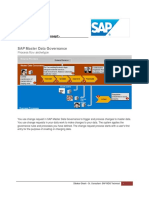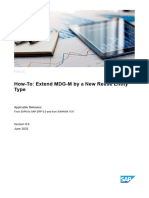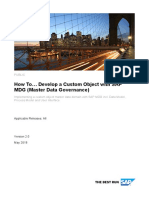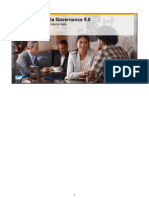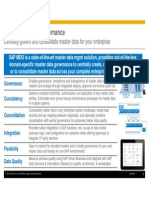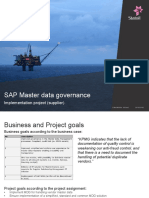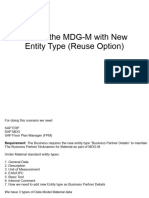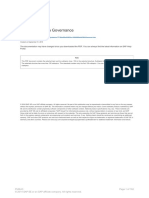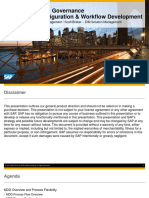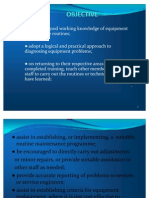0% found this document useful (1 vote)
568 views31 pagesS4 HANA MDG - Vendor Master Governance
The document discusses the key functionalities of SAP Master Data Governance including data modeling, UI modeling, process modeling, and reporting. It provides details on modeling master data structures, mapping user interfaces, defining governance scopes, configuring change request types and workflows, and adapting existing applications for material master governance. The document is a presentation on SAP MDG vendor master governance.
Uploaded by
HariCopyright
© © All Rights Reserved
We take content rights seriously. If you suspect this is your content, claim it here.
Available Formats
Download as PPTX, PDF, TXT or read online on Scribd
0% found this document useful (1 vote)
568 views31 pagesS4 HANA MDG - Vendor Master Governance
The document discusses the key functionalities of SAP Master Data Governance including data modeling, UI modeling, process modeling, and reporting. It provides details on modeling master data structures, mapping user interfaces, defining governance scopes, configuring change request types and workflows, and adapting existing applications for material master governance. The document is a presentation on SAP MDG vendor master governance.
Uploaded by
HariCopyright
© © All Rights Reserved
We take content rights seriously. If you suspect this is your content, claim it here.
Available Formats
Download as PPTX, PDF, TXT or read online on Scribd
/ 31






